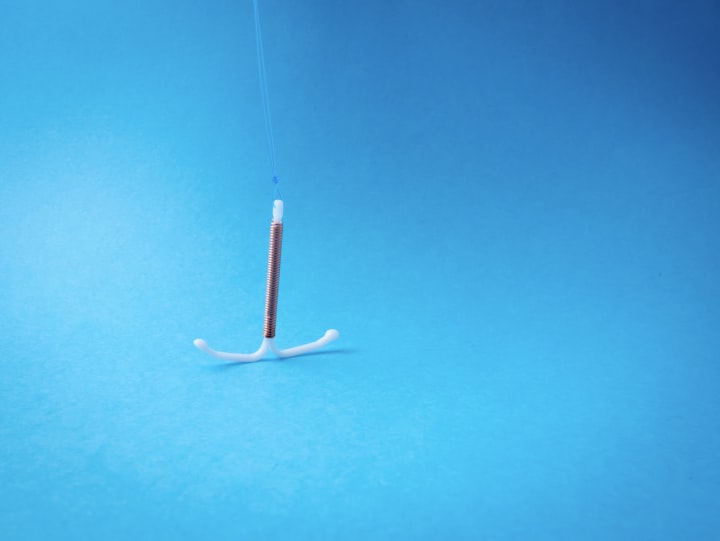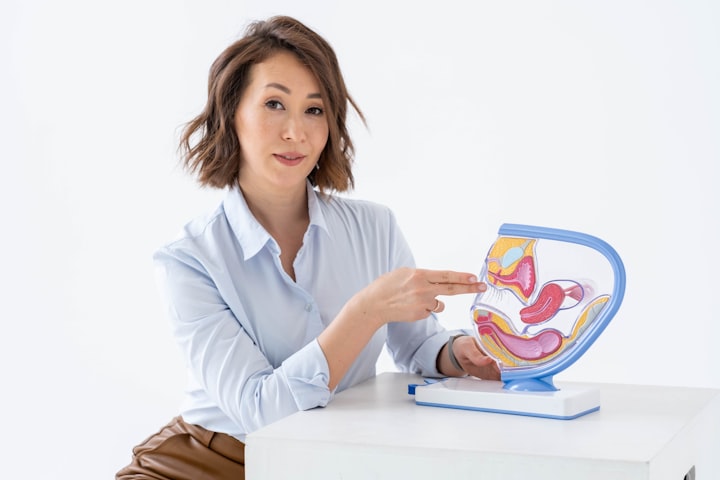"What are IUDs, and how do they work?"
A quick lesson in long-term birth control!

If babies aren’t on your agenda for this year, or you’ve decided to prioritize your period health, an IUD can be a great option.
Intrauterine devices (may also be called intrauterine systems), or IUDs, are a form of long-acting reversible contraception (LARC). They are tiny, flexible plastic devices that are placed inside the uterus to prevent pregnancy and are considered one of the most effective birth control methods available. You don’t need to take something every day and as soon as it is removed, fertility status returns to its pre-insertion state. IUDs can range in “wear time” from 3 to 12 years, depending on the type.
There are two types of IUDs available - hormonal and non-hormonal. If you’re not sure which is which, hormonal IUDs contain hormones and non-hormonal IUDs do not.
Hormonal IUDs contain a progestin (a manufactured progesterone), which works within the uterus to modify the environment so it is less hospitable to sperm - they thicken cervical mucus so sperm are blocked from entering the uterus, and they can sometimes suppress ovulation by countering estrogen’s influence in the body. If the lining of the uterus doesn’t grow significantly or ovulation is suppressed, this means that periods can become lighter, less frequent or stopped entirely. Hormonal IUDs that have a lower dose of progestin and are worn for a shorter length of time, compared to those with a higher dose that are worn for a longer span of time. It’s important to know that regardless of the “dose” of an IUD, it can be removed prior to its end date
Non-hormonal IUDs don’t contain any hormones. They use copper instead, which impacts sperm function and prevents them from ever reaching an egg. Because non-hormonal IUDs don’t contain hormones, they don’t effect how much uterine lining grows or suppress ovulation, so periods remain “regular”. It’s common for periods to even become a bit heavier within the first 6 months of wearing a non-hormonal IUD, and this settles back to typical in the months following.
IUDs can also be used as emergency contraception, similar to Plan B - if inserted within 5 days after barrier-free sex, they are more than 99% effective in preventing pregnancy. You can then keep the IUD inserted to prevent future pregnancy as well!
There is a lot of misinformation about IUDs on the Internet, so here are some common myths and facts:
1. IUDs do not make you infertile. Once an IUD is removed, the body returns to its pre-insertion fertility status. Meaning, if there were no fertility concerns prior to insertion, there will not be any after it is taken out. Similarly, if there were concerns (like irregular or missed periods, frequent miscarriage or heavy and painful bleeding), these may become a concern again once the IUD is removed. The IUDs themselves do not cause infertility.
2. IUDs can sometimes migrate out of place. The uterus is not a closed system to the rest of the abdomen - the fallopian tubes are open at the ends! Some uteruses may do more pushing around and cause an IUD to move through the fallopian tubes and out into the abdominal cavity. There is also a risk that an IUD may puncture the uterus, but this seems to be limited to concerns with insertion technique and the uterine structure (such as recent childbirth or other complications). In these cases, an IUD is removed and the tissues are left to heal before discussing re-insertion, or surgery to find and remove the IUD.
3. You do not need a detox after removing an IUD. The human body is incredibly resilient and does not need supplements, shakes or diets to process and remove the hormones in any form of birth control you might take. Taking birth control often aligns with other big life changes and with puberty (where the body is already changing) and this can sometimes be mistaken for side effects of taking hormones. It’s often suggested, when appropriate, to use any birth control method for 3 to 6 months to assess symptom changes - you are allowed to request the IUD is removed at any time before this as well.
4. IUD insertion can be painful for some individuals. It’s important to ask lots of questions of your provider to ensure you are ready and comfortable. Taking naproxen, ibuprofen or acetaminophen alone is not the most effective pain management tool for all people. It can be helpful to bring a second person with you to any insertion appointments so you have back-up for questions and advocating for your needs.
5. You might be able to feel the strings of an IUD during sex. An IUD has small strings that hang outside of the uterus, so a provider can gently pull them to remove the IUD and you can check to ensure it is still in place. After insertion, it is generally suggested to wait a period of time before any penetrative activities occur to avoid pain or disrupting the IUD. You or a partner might be able to feel these strings later on, but this doesn’t mean the IUD is falling out!
IUDs are a great option for folks who struggle with or don’t want to take something every single day, and they provide long-acting protection against pregnancy. Knowing more about them helps you make the best choice for you and your body!
About the Creator
Emily the Period RD
I help people with periods navigate menstrual health education & wellness with a healthy serving of sass (and not an ounce of nutrition pseudoscience).






Comments
There are no comments for this story
Be the first to respond and start the conversation.